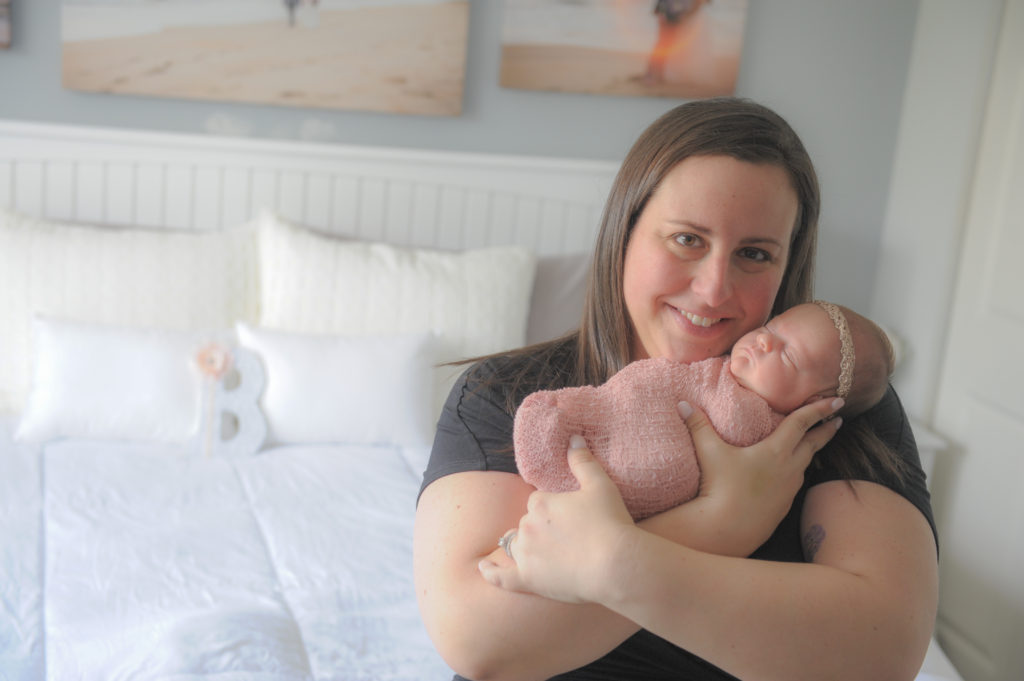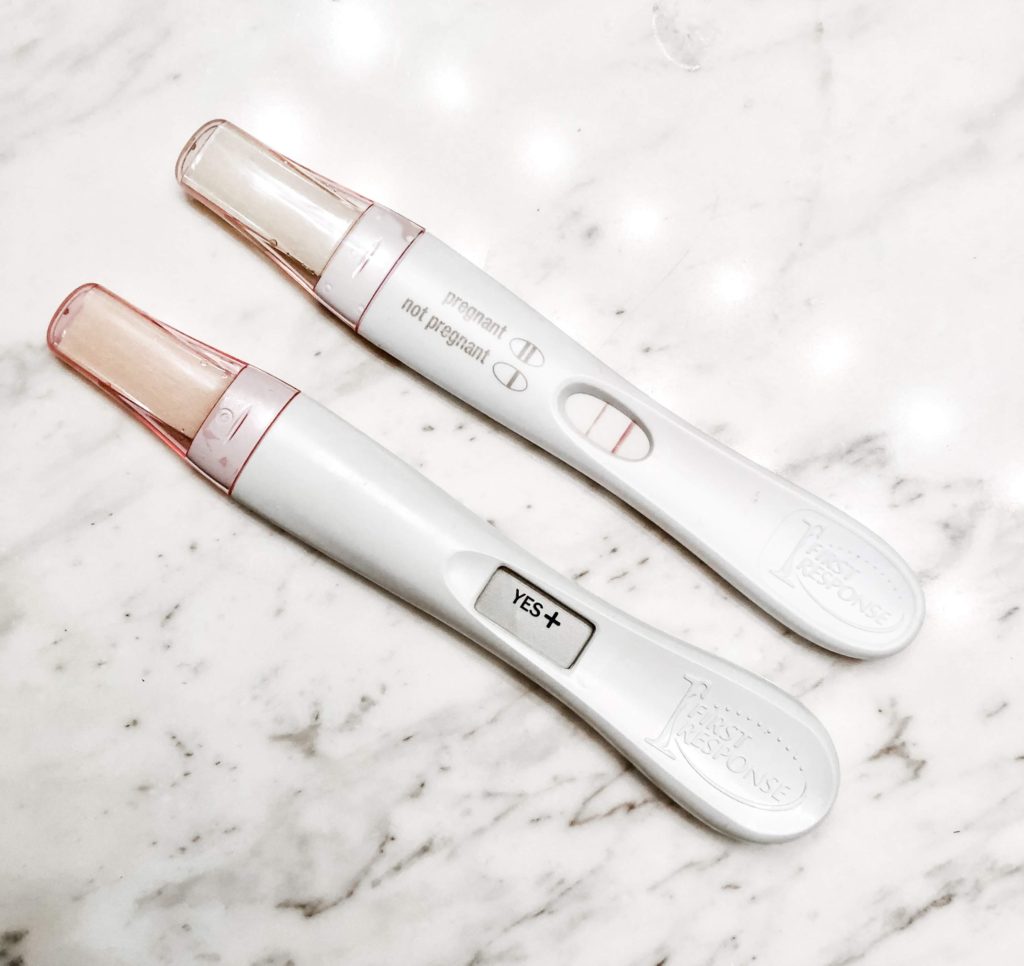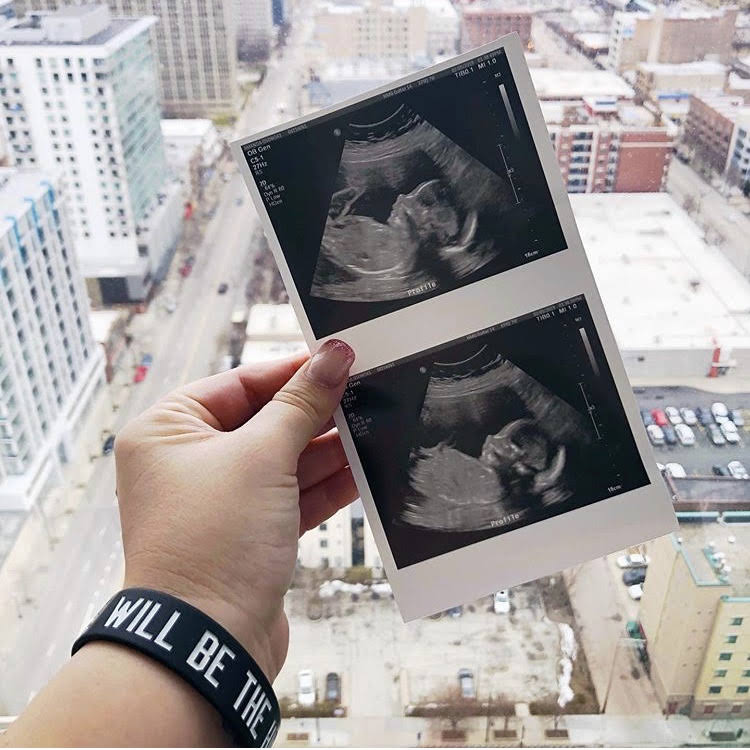When I first used the word “infertility” to describe my path to motherhood, it felt dirty coming out of my mouth. It felt shameful. Foreign. Uncomfortable. Honestly, the word itself felt like failure. It felt like I was putting on display the stacks of negative pregnancy tests filling my bathroom garbage can, nestled beside crumpled tissues and years of wishes. I felt so alone.

I’ve known I was made to mother since I was young and babysitting for the neighbors’ kids. I loved being able to perform small gestures like rocking them to sleep and wiping their faces after they ate. I knew then that I wanted nothing more than to carry and raise children, to provide them love and security and a place for discovery and growth.
But over time, I learned that the journey to becoming a mother, for me, might be complicated.
I began experiencing symptoms of Crohn’s disease when I was 23. Crohn’s disease is an inflammatory bowel disease, which causes inflammation of the digestive tract and leads to abdominal pain, severe diarrhea, vomiting, blood loss, fatigue, and malnutrition. Complications of the disease include bowel obstructions, ulcers, fistulas and fissures in the intestinal lining, and extraintestinal manifestations such as vitamin deficiencies, anemia, weight loss, and joint pain and instability, along with the risks and side effects of the medications used to manage the disease.
It took years and years of illness, devastation, and almost a complete loss of hope before I was able to get a correct diagnosis, and even longer to find a treatment plan that gave me back a quality of life. Although the challenges of the disease could impact my body’s ability to successfully conceive and carry a child, I tried hard to remain hopeful. Crohn’s disease never stopped my husband and me from talking ad nauseam about our dreams of becoming parents. We just knew my body needed to be in a better place to weather a pregnancy, so we worked tirelessly on all of the factors we could control: nutrition, mental health, medication adherence, self-care, etc.

When we were ready to try getting pregnant, we met with all of my doctors as well as a high-risk maternal fetal medicine (MFM) physician. Every doctor said the same thing: It was safe to try to conceive, but they recommended I wait until I was in clinical disease remission to give us the best shot at conception and starting the pregnancy healthy. Remission, while beautiful and ideal, is hard to achieve and can be even harder to maintain. But I was controlling my Crohn’s disease better than I ever had before, and I felt good about the state my body was in, so we started trying to conceive.
I was doing everything in my power to become a parent, including tracking ovulation, scheduling intimacy, and taking care of my mind, body, and soul. But here I was, still with an empty womb.
After about six months, I actually reached that elusive state of remission, and we celebrated. We felt like that would change our luck on a dime. But, when another six months passed and I still wasn’t pregnant, I felt crushed. I was doing everything in my power to become a parent, including tracking ovulation, scheduling intimacy, and taking care of my mind, body, and soul. But here I was, still with an empty womb.
My gynecologist sent me for bloodwork and recommended my husband get a sperm analysis, something I had never heard about before. The results came back somewhat discouraging, but weren’t conclusive. My doctor recommended we speak with a reproductive endocrinologist (RE). And then she said something I didn’t expect to hear: “You might not be able to get pregnant without the assistance of technology.”
I knew that fertility treatments existed and I’d heard of people having success with them, but I also knew they were expensive, exhausting, painful, and unpredictable. I didn’t know anyone personally who’d gone through with them, and I felt overwhelmed and devastated. What happened to the romantic part of getting pregnant?
The RE eventually diagnosed us with “unexplained infertility.” While one in eight couples in the United States may struggle with infertility, 10 percent of those cases are deemed “unexplainable.”

This meant there was no medical reason to explain why we’d been trying for a year to get pregnant without any success. This was both good news, and bad. On one hand, this meant we weren’t facing any definitive challenges and it seemed like having Crohn’s disease wasn’t itself hindering our ability to get pregnant. But on the other hand, we also had very little guidance on what the rules for our fertility treatments should be. And in the very front of our minds sat the knowledge that if my Crohn’s disease flared at any time, we’d need to stop treatments indefinitely. This all felt like a huge gamble.
We chose to follow the doctor’s recommendations, and started with intrauterine insemination (IUI). This mostly noninvasive procedure made me feel hopeful, motivated, and like I was taking active steps toward motherhood. But it failed. Three times. We were then five months into our relationship with the doctor, and it was time to change our approach. We scheduled one last IUI procedure for July, knowing that if it failed, we’d begin in vitro fertilization (IVF). We felt like we were living on borrowed time, so afraid that my Crohn’s disease would rear its head and interrupt everything we’d been working for.
While one in eight couples in the United States may struggle with infertility, 10 percent of those cases are deemed “unexplainable.”
I wasn’t surprised when I had a negative pregnancy test following my fourth IUI, but it still stung. Starting IVF meant that my entire life began revolving around appointments and injections. There were specific times and procedures for each injection, and they happened two or three times a day, every single day. Each one required learning tactics, preparing my body, watching for side effects, diligently showing up for monitoring visits, and feeling hope, fear, patience, and frustration all at once.
My first IVF cycle resulted in 13 days of stimulation (stims), an egg retrieval that garnered 12 eggs, eight of which fertilized into embryos and four of which matured. We did a fresh, day 5 transfer, and eight days later I took the most anticipated pregnancy test of my life.

It was negative.
My husband and I sat together on our couch and cried. Hope is hard, and exhausting, and we had to find from deep within ourselves the courage to push forward.
After my fresh transfer, we had sent our remaining three embryos to be both frozen and genetically tested. These turned out to be genetically normal—and all potentially viable. Again, we began another cycle of injections, alongside the grit, the grace, the dance with hope and fear. On September 20, 2018, a frozen embryo was transferred to my uterus, and eight days later, I got my first-ever positive pregnancy test.
I had taken every prenatal class available to me, and I knew a million things about delivering my daughter, but only minimally about my options for feeding her, the challenges we may face, how my body would recover, and how motherhood would change me.
I loved pregnancy, more than I could’ve anticipated. My favorite parts included graduating from our RE to the MFM physician who followed us to delivery, feeling the baby kick for the first time (and the second, third, fourth and hundredth times too), and the way my protective instincts were right on par. I felt like a mom from the moment I knew my daughter was growing inside of me, and that was as beautiful as I could’ve imagined. The harder parts of pregnancy involved the 148 injections to conceive her and ensure she grew safely, vomiting every single day, being extremely limited in the things I could eat, and having my delivery preferences questioned during my second trimester (a story for another time). Ultimately, my water broke at 35 weeks and four days pregnant, and 14 hours later my baby girl joined us earthside.
In the first few months postpartum, I realized how woefully underprepared I was for the things that were happening to my body and my emotions. I had taken every prenatal class available to me, and I knew a million things about delivering my daughter, but only minimally about my options for feeding her, the challenges we may face, how my body would recover, and how motherhood would change me. Although I used a delivery doula, I didn’t have a postpartum plan or support set up, and I felt the absence of those things largely.

When my daughter was six months old, I decided that I wanted to help normalize other women’s experiences when it came to infertility, pregnancy, and postpartum life. I had chosen to be open about my journey through social media, and several old friends and new connections reached out in gratitude, saying, “I went through that. It was so hard. I was alone. I thought it wouldn’t get better.” This passion led me to become a doula, and I now work with clients in all stages of their journey to parenthood, including trying to conceive.
These times of social distancing and isolation are extremely difficult, and the way they’ve changed our plans and our normals is devastating. If you are experiencing infertility or have had treatments paused due to COVID-19, please reach out. I’m here to support you. You’re not alone.
Like this piece? Subscribe to our newsletter for real stories about women on their journey to motherhood.
